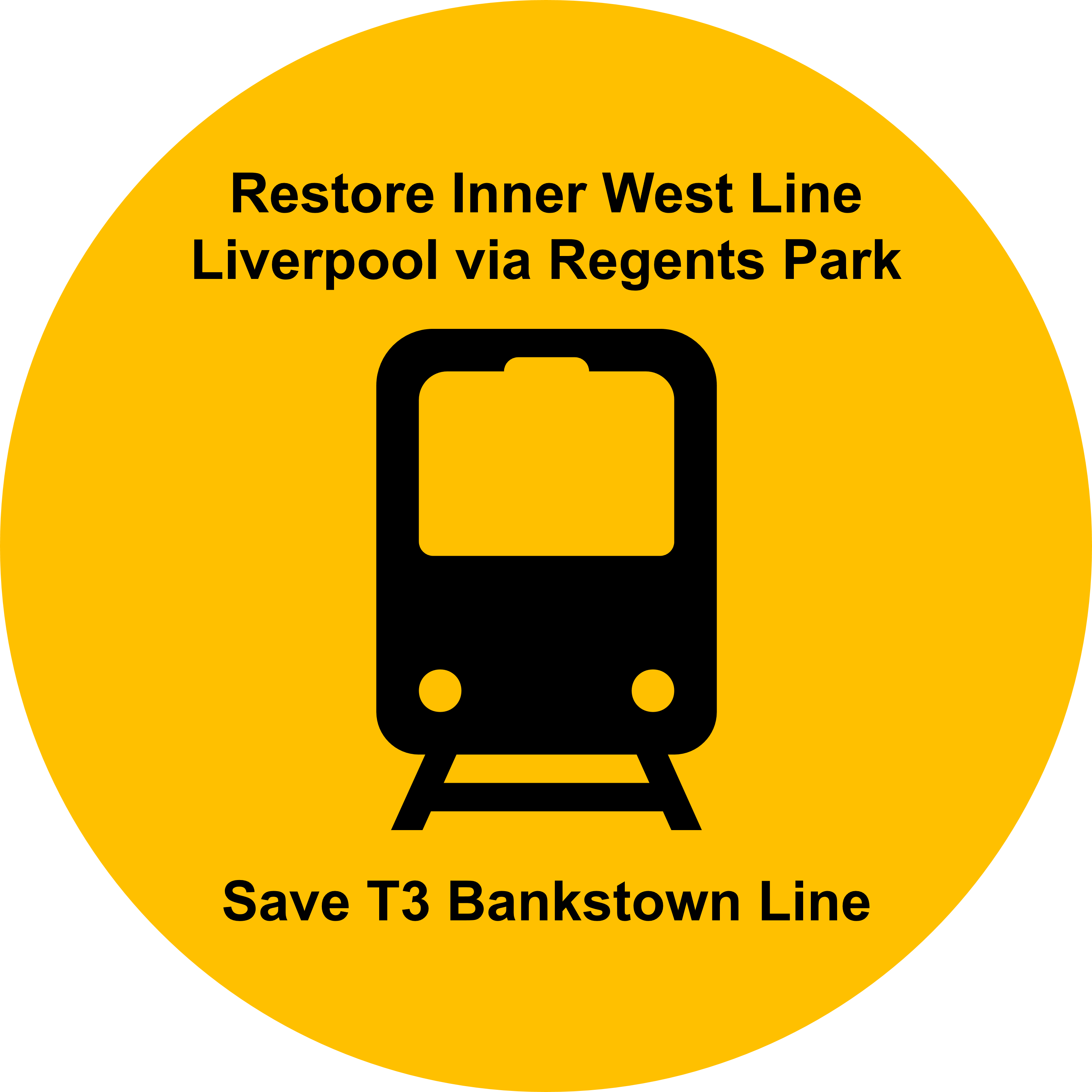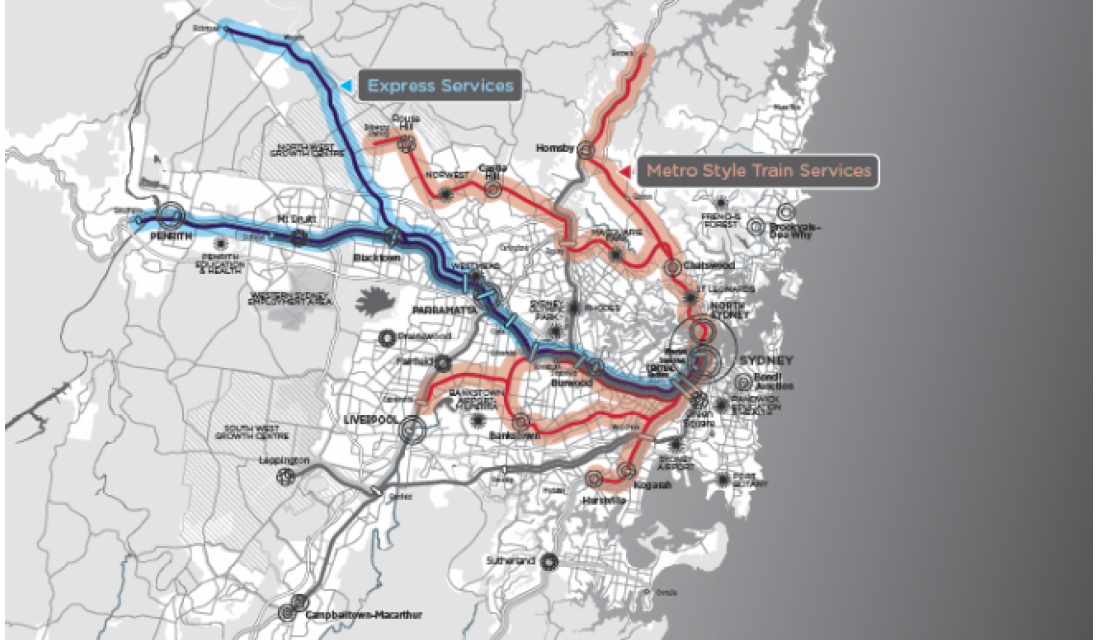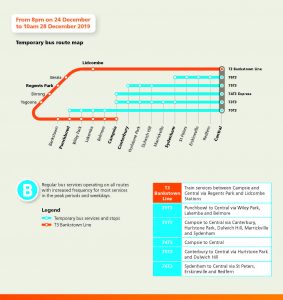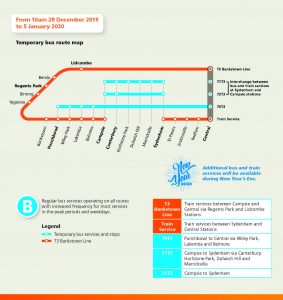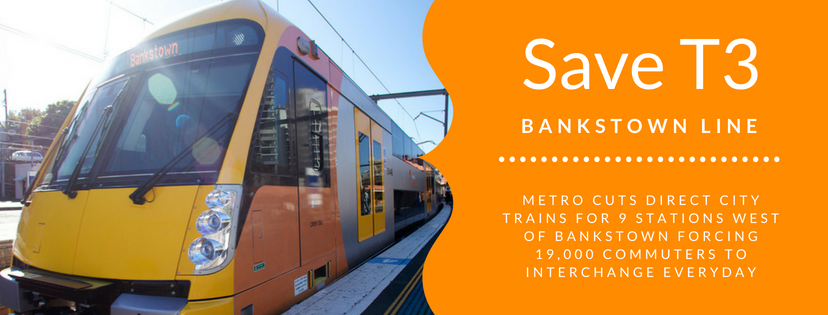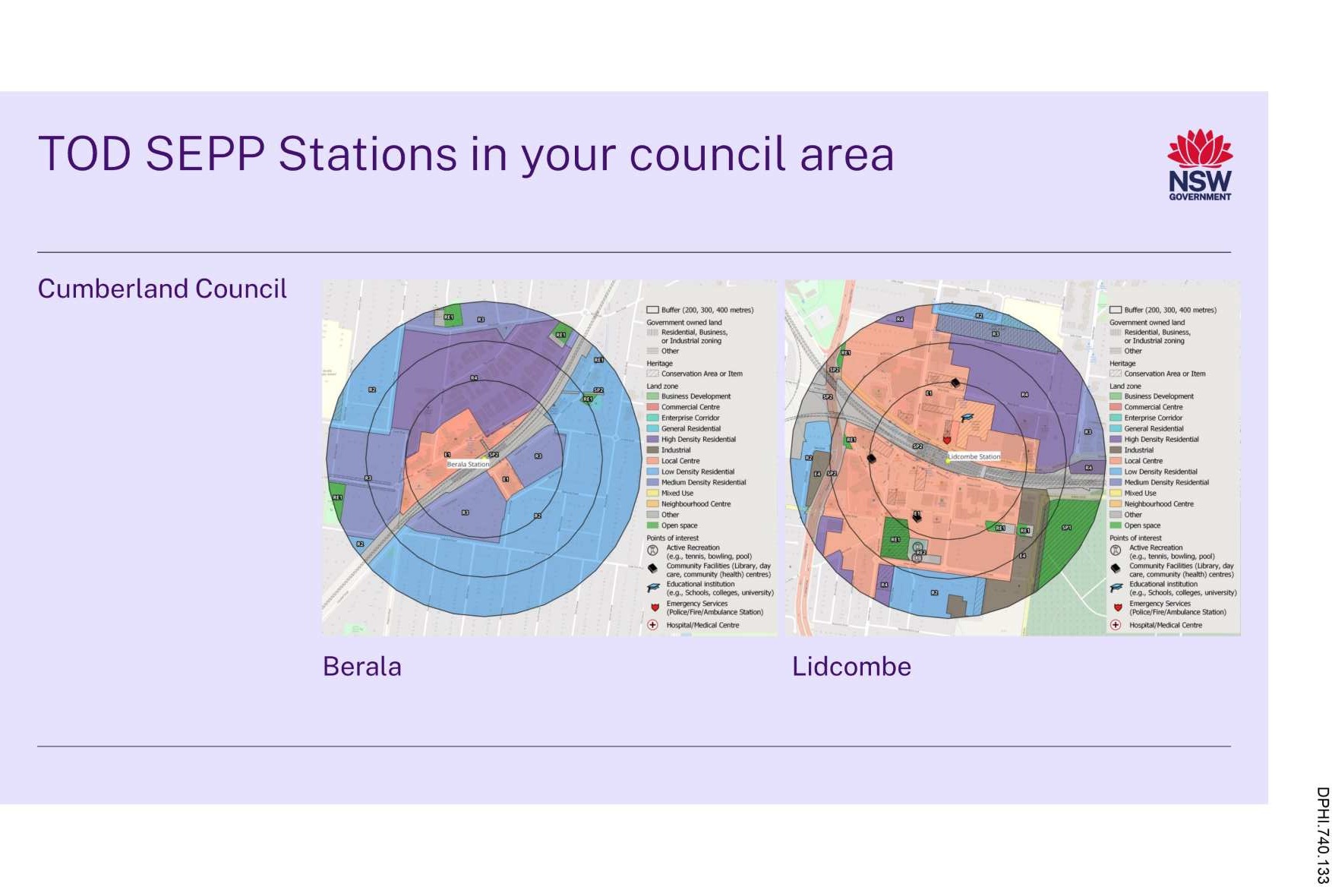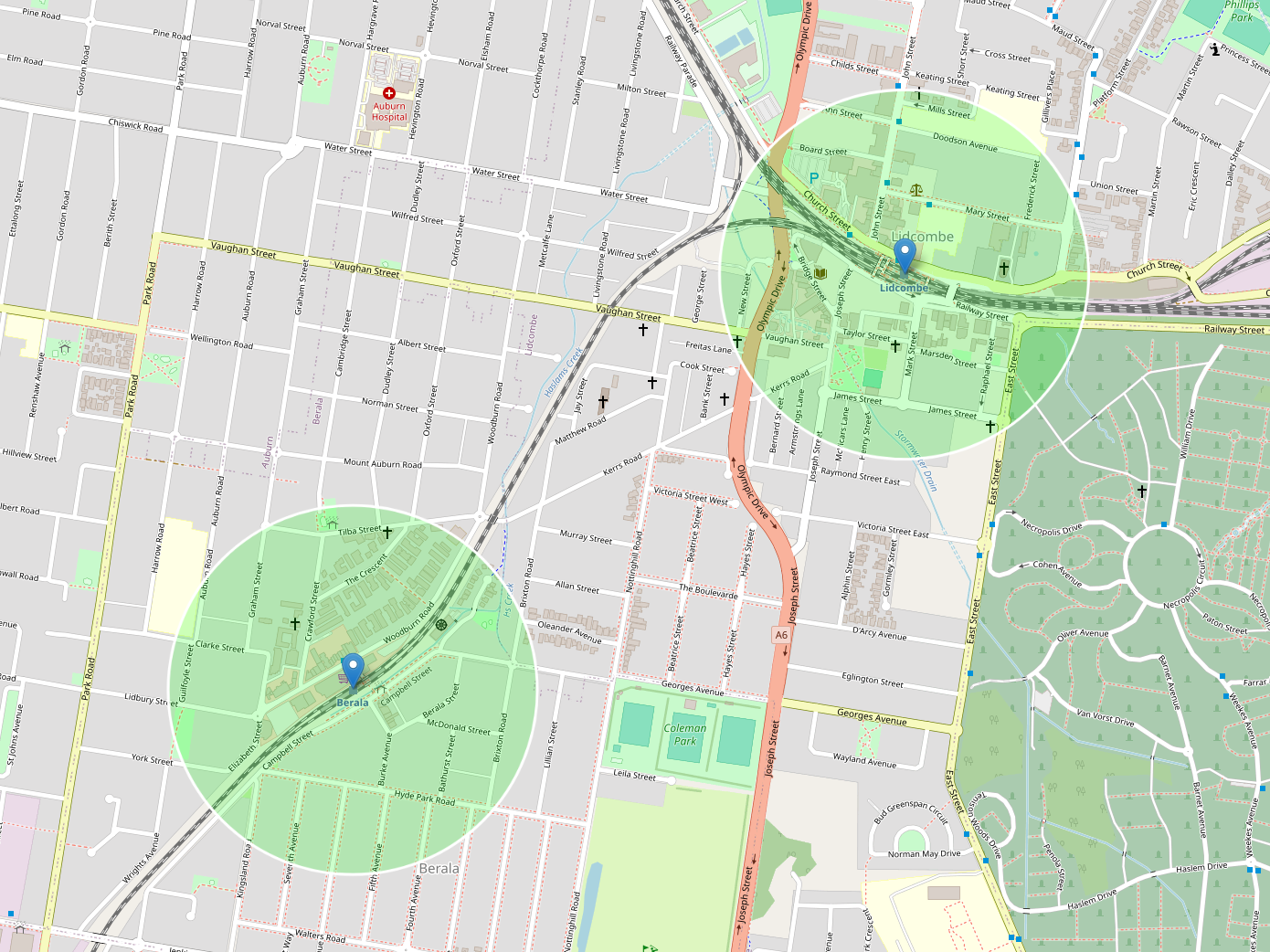The “Homebush bottleneck” is a hoax invented by the NSW Government as an excuse for cutting train services, privatise the railway by stealth and bring over-development into local suburbs.
Commuters from Berala, Regents Park, Chester Hill and nearby suburbs have every right to be angry at the NSW Government’s contempt for the community.
The Metro Southwest from Sydenham to Bankstown is a major downgrade of the existing and functional railway that has impacts on commuters outside of the project area.
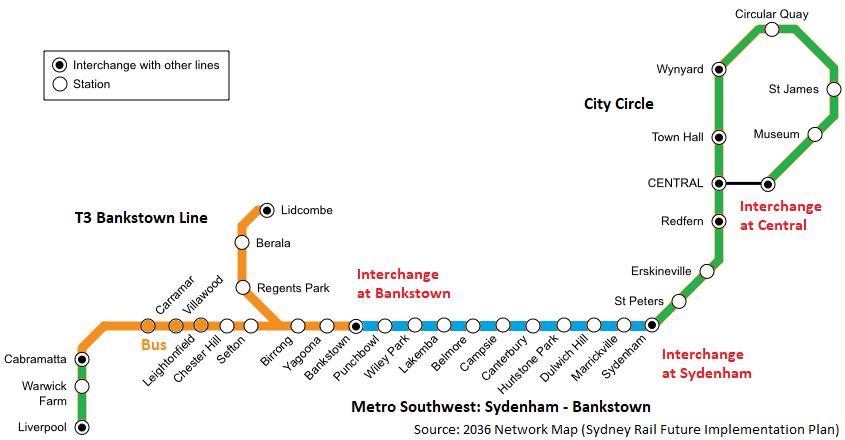
Having ignored an overwhelming majority of residents’ opposition to downgrading the T3 Bankstown Line into Metro Southwest, the NSW Government has also engaged in questionable conduct relating to the handling Freedom of Information (GIPA Act) requests.
The Restore Inner West Line and Save T3 Bankstown Line community action group has been fighting for access to the Temporary Transport Plan which will be implemented during the shutdown of the T3 Bankstown Line for construction of Metro Southwest.
Since 2018, the NSW Government has imposed fees totalling $1,170 for information regarding the Temporary Transport Plan despite Sydney Metro stating that such document would be publicly released “several years” before the shutdown of the T3 Bankstown Line.
The first major shutdown of the T3 Bankstown Line will take place from 24 December 2019 to 5 January 2020.
Bus services will replace trains between Central to Campsie (and Hurstville for part of the shutdown period).
After a number of questionable delays from Sydney Metro, concept documents behind the Temporary Transport Plan was released under Freedom of Information (GIPA Act) to Restore Inner West Line and Save T3 Bankstown Line on 4 September 2019.
The official Temporary Transport Plan was published on the NSW Government’s MySydney website on 6 September 2019.
What will come as no surprise to Berala, Regents Park, Birrong, Sefton and nearby commuters is the fact that the “Homebush bottleneck” is in fact a hoax invented by the NSW Government to excuse the removal of Inner West Line services from City to Liverpool (& Bankstown) via Regents Park.
In addition to the replacement bus services between Central and Punchbowl, the T3 Bankstown Line will operate from Central to Campsie via Lidcombe/Regents Park.
T2 Inner West Line: Liverpool via Regents Park trains will also operate from Central, although Transport for NSW has not confirmed the frequency of this service.
Both the T2 Inner West Line and T3 Bankstown Line are able to operate through Homebush station to Liverpool/Bankstown via Regents Park without any issues.
There is adequate track capacity for restoring the Inner West Line (City to Liverpool via Regents Park) and Bankstown loop (City to Bankstown via Regents Park).
The NSW Government’s Temporary Transport Plan adds further weight strengthening the case for restoring the Inner West Line to Liverpool and Bankstown prior to its removal in 2013.
With the current T2 Inner West Line also providing service to Parramatta, having been extended through Homebush and Lidcombe in 2017: it is clear that the “Homebush bottleneck” is indeed a hoax invented by the NSW Government.
Commuters have good reason to be questioning why the NSW Government invented the “Homebush bottleneck” hoax to excuse the removal of the Inner West Line (City to Liverpool [& Bankstown loop] via Regents Park in 2013.
The answer lies within the NSW Government’s original plans to introduce Sydney Metro and privatise the rail network through a three tier system:
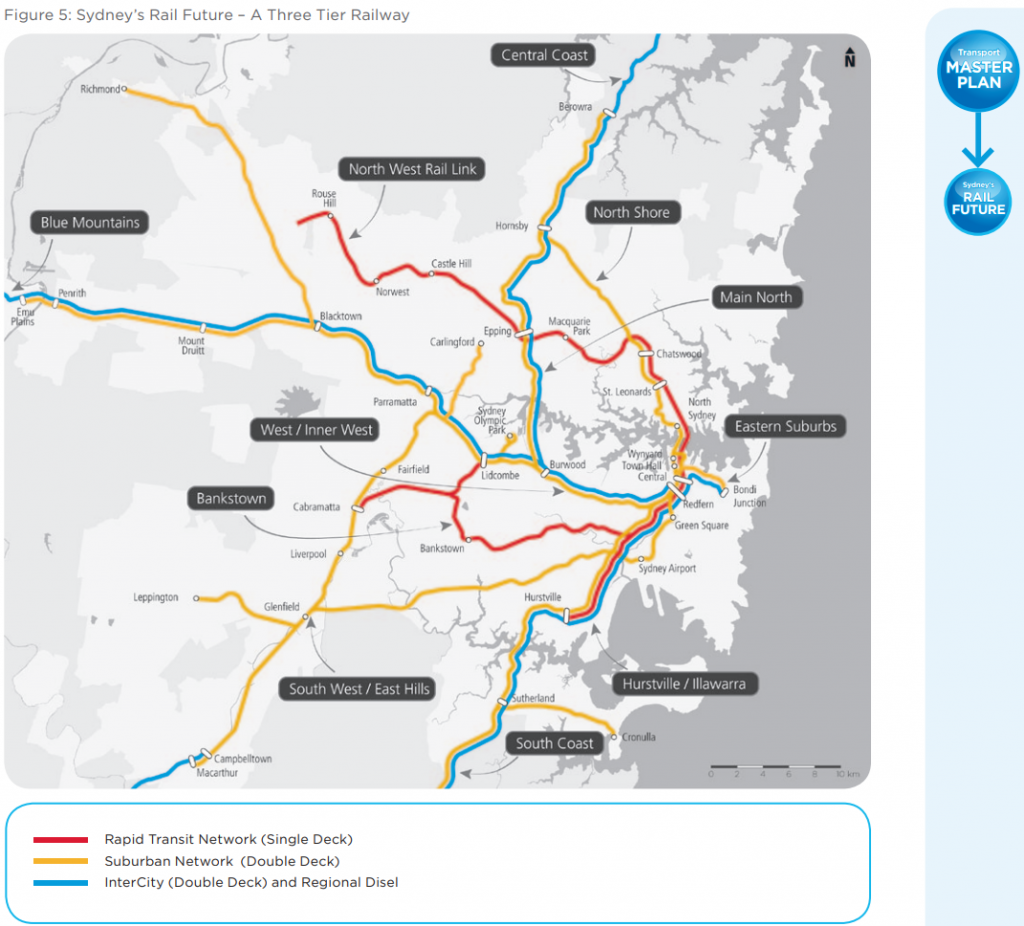
The Sydney’s Rail Future document published by the NSW Government in 2012 shows the conversion of the T3 Bankstown Line between Sydenham and Lidcombe/Cabramatta into Sydney Metro.
Plans to convert the T2 Inner West Line between Central and Homebush were also considered, before the final route of Sydenham to Bankstown was selected in 2015 for conversion into Sydney Metro.
Rapid Transit was renamed Sydney Metro in June 2015.
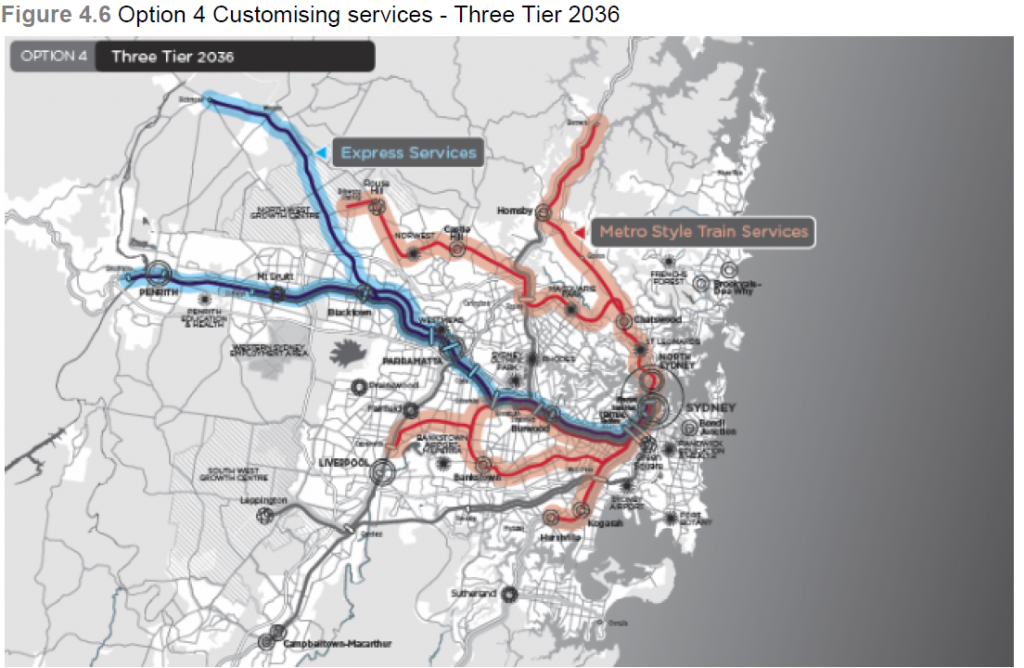
A Sydney Trains statement published a month before the 20 October 2013 timetable changes which terminated the Inner West Line at Homebush and Bankstown Line at Lidcombe (thus removing the services from City to Liverpool/Bankstown via Regents Park), stating that the “new timetable moves the network closer to the three tier model outlined in Sydney’s Rail Future”.
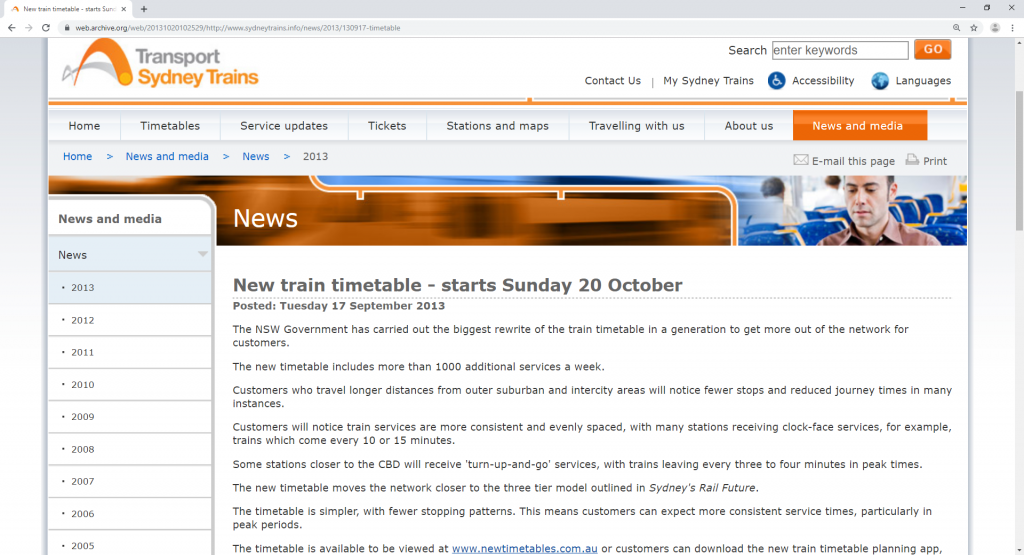
The termination of the Inner West Line at Homebush, termination of the Bankstown Line at Lidcombe, removal of City to Liverpool via Regents Park and removal of City to Bankstown via Regents Park was part of the NSW Government’s early plans to introduce the three tier model including converting both lines into Sydney Metro.
There is no reason why the Inner West Line (City to Liverpool/Bankstown via Regents Park) cannot be restored.
There is no track capacity constraint between Homebush and Lidcombe as the “Homebush bottleneck” is a hoax invented by the NSW Government.
One must also wonder whether the NSW Government has also invented the “Bankstown bottleneck” as part of attempts to justify the downgrading of the T3 Bankstown Line including the replacement of a functional train line between Sydenham to Bankstown with Metro Southwest.
The NSW Upper House is holding an inquiry into the “Sydenham – Bankstown Line Conversion“.
Lodge a submission to stop the downgrading of our train services, stop privatisation, stop over-development and Save T3 Bankstown Line: www.SaveT3.org/MetroInquiry.
No evidence of insufficient capacity for T2 Inner West Line trains to continue from Homebush to Lidcombe then Liverpool and Bankstown via Regents Park!
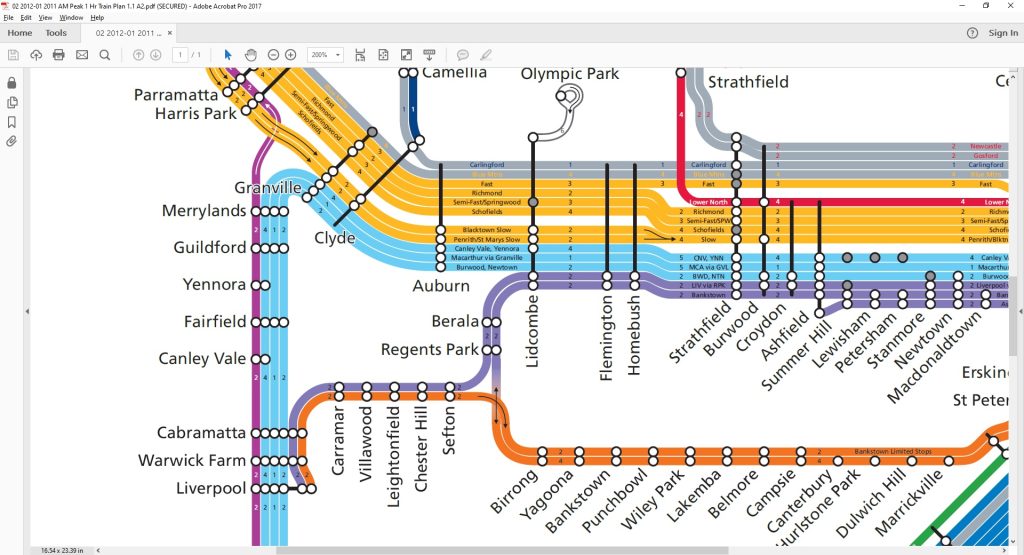
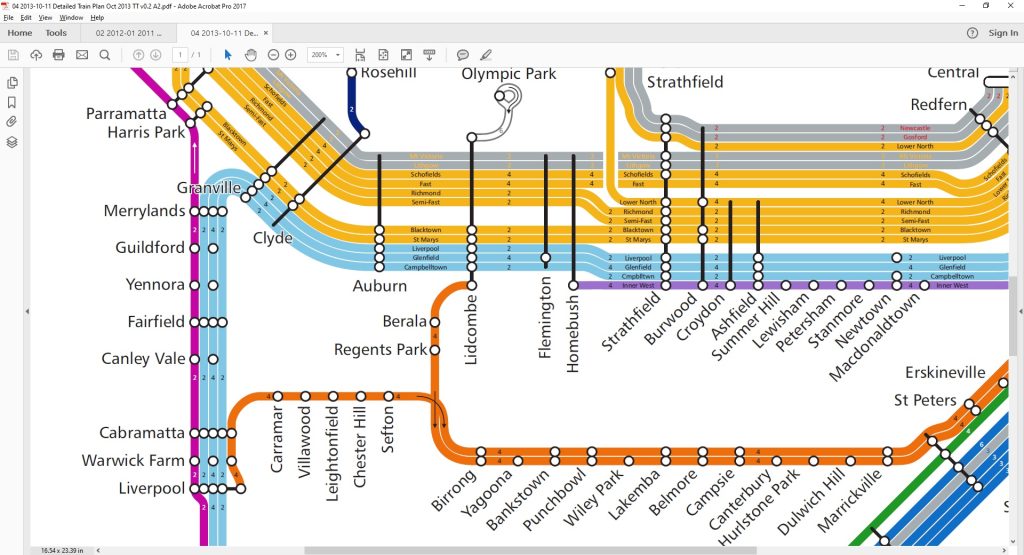
Cutting the Inner West Line causes a road bottleneck!
Arthur St/Centenary Drive, Flemington (Homebush West)
The actual “Homebush bottlebeck” is actually a traffic pinch point in Flemington at the intersection of Arthur St and Centenary Drive
Strathfield Council has acknowledged this in passing a motion in November 2014 supporting the restoration of the Inner West Line to Liverpool via Regents Park
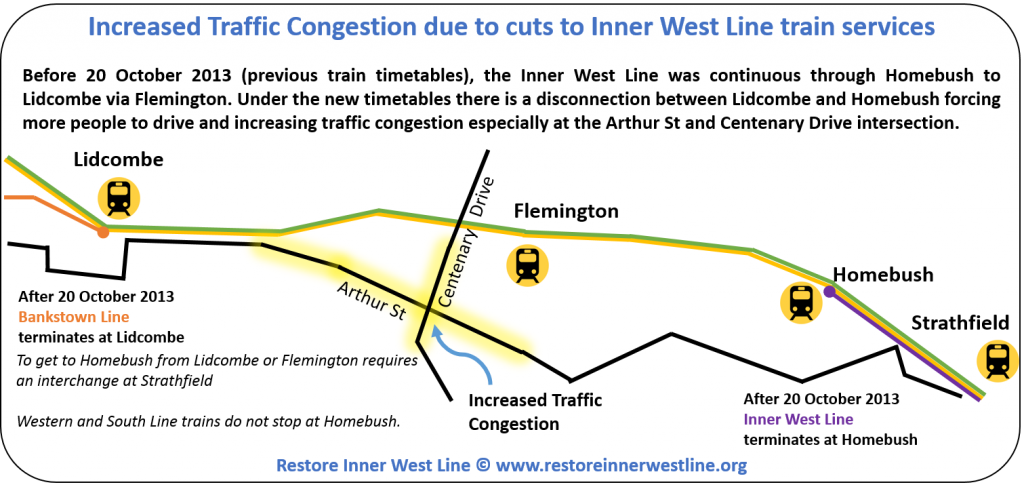
Strathfield Council recognises that terminating the Inner West Line at Homebush and other services at Lidcombe has increased the number of drivers using the intersection as a thoroughfare from South West Sydney to Strathfield and Sydney CBD

